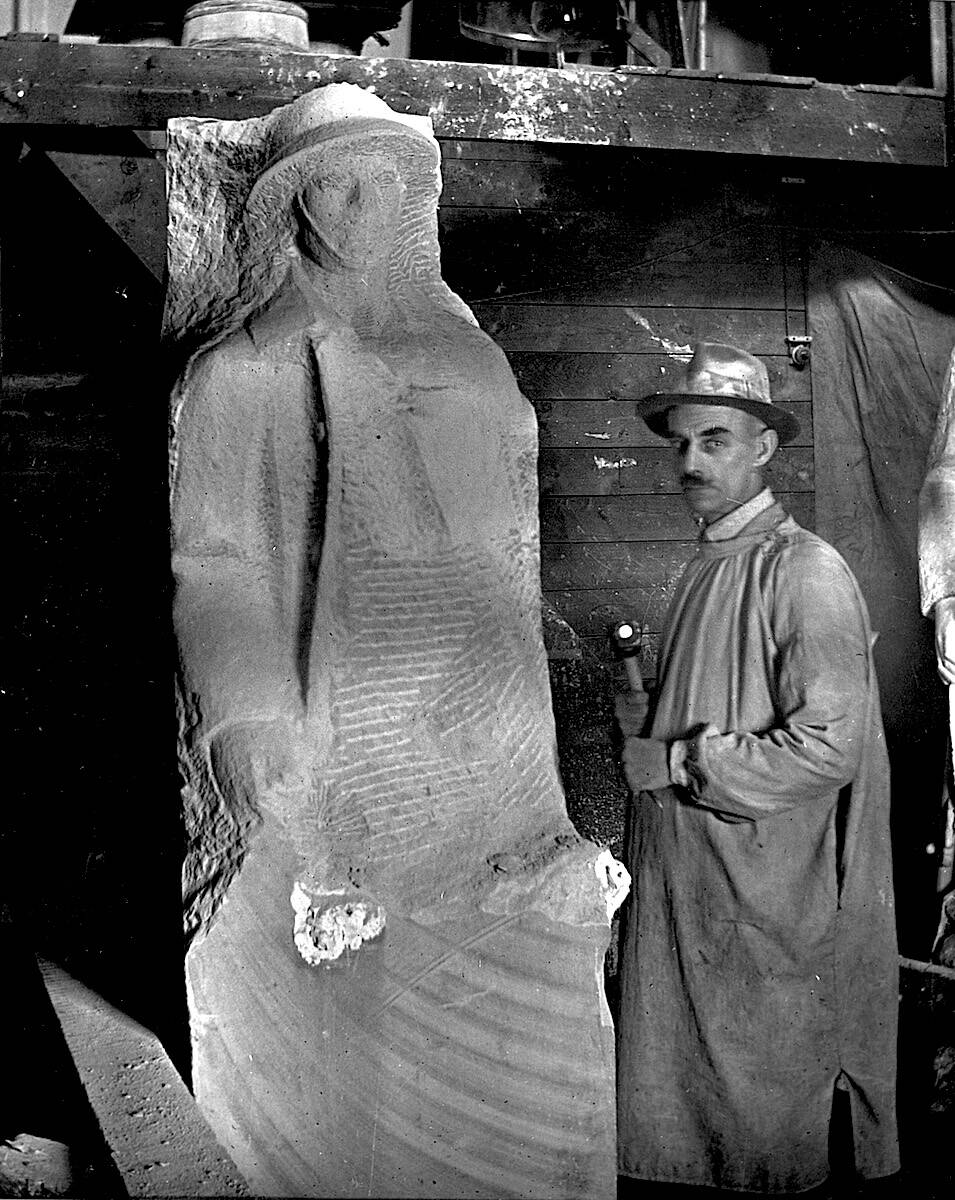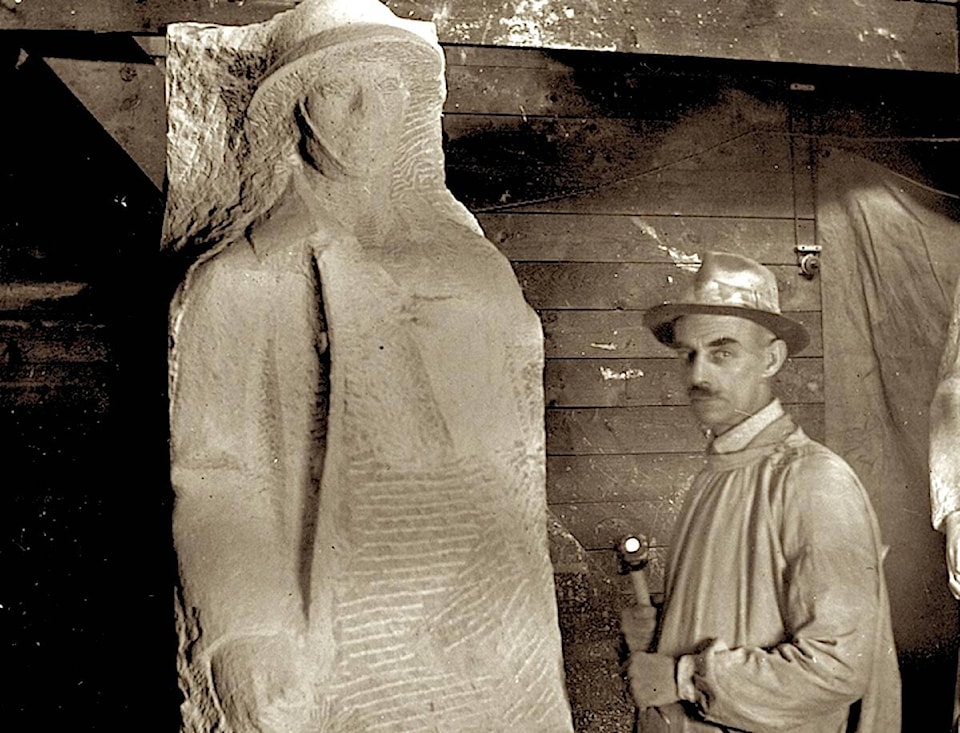Red Deer was one of the first Alberta communities to raise a statue of the unknown soldier to memorialize local lives lost in the Great War.
The city’s earliest and best-known public artwork was unveiled on Ross Street almost a 100 years ago. The larger-than-life sculpture of a soldier gazing westward originally commemorated the 114 local young men who died in the War of 1914-18.
Later, more names of deceased soldiers were added to the scrolls. The Tyndall limestone memorial was re-dedicated to honour those who lost their lives in the Second World War, the Korean War, and other conflicts.
While Red Deer’s Cenotaph, carved by English-born sculptor Major Frank H. Norbury, is now considered a provincial historic resource and one of the artists’ earliest and finest works, it wasn’t erected without some controversy.
Historian Michael Dawe — whose grandfather, engineer Robert Dawe, was on the cenotaph committee — said there were complaints about the statue being erected in the middle of the city’s main street.
With the necessity for a complicated pedestal design to straddle the city’s main water main, located just below where the cenotaph was to be installed on Ross Street, some critics argued the statue should be relocated to a quieter spot.
But others adamantly demanded that this memorial be front and centre — so all Red Deerians who pass it daily will be reminded of the supreme sacrifice young soldiers from this city made during the “war to end all wars.”
Losing so many young men when the city’s population was less than 3,000 left a profound impact, said Dawe. Besides the local boys who died overseas, hundreds of former soldiers limped back to their Red Deer area farms with broken bodies, minds and spirits.
“It left a generational impact,” Dawe added.
Once organizers settled on a Ross (50th) Street location, the municipality provided the strip of land needed for the cenotaph project — with a promised to add traffic lights on either end of where it was to stand.
But no municipal funds were contributed towards the cost. The city was close to broke at the time, said Dawe. “There was a post-war depression and with rising inflation, everything collapsed.” Even paying municipal staff was a struggle then due to a “vast amount” of unpaid taxes.
A public fundraising campaign was instead launched to raise the money for the cenotaph. And Norbury, a skilled sculptor and decorated veteran, was chosen to do the carving in 1921.
Born in Liverpool in 1871, Norbury trained as a stonemason and embellished many buildings in his home city. Following decorated service in the First World War, he came to Canada.
Norbury became one of Alberta’s most skilled carvers of stone and wood, later serving as President of the Edmonton Art Club, a member of the Alberta Society of Artists, and art critic for the Edmonton Journal.
The Red Deer Cenotaph was Norbury’s first major commission in his adopted homeland. According to Alberta Culture’s website, the base for the sculpture was designed by prominent local architect C. A. Julian Sharman and created by Lachlan MacLean of MacLean Granite.
Norbury’s stone soldier sports an accurate First World War Canadian dress kit. But Dawe said the barrel of the rifle he carries fell off decades ago and was never replaced.
It’s the soldier’s gaze viewers are drawn to: The unknown soldier faces the sunset and train station.
“The soldier’s face communicates both a weariness and a resolution of purpose, while his body twists westwards in a symbolic motion away from the ravages of European battlefields and towards home and peace,” states a description in Alberta Culture’s Historic Resources Management Branch.
The poignant memorial was formally unveiled 99 years ago on Sept. 15, 1922 by Lord Byng of Vimy, Governor General of Canada.
And many decades later, the cenotaph continues to remind Red Deerians of wartime sacrifice — as well as the resilience of this once small community to overcame monumental loss in order to grow and thrive.
“The Red Deer Cenotaph honours the selfless service of Alberta’s military men and women and serves as a reminder of how these Albertans helped to shape the history of our province, this nation and the world,” Alberta’s former Culture Minister Heather Klimchuk stated in 2013 when this “treasured monument” became an Alberta historic resource.
She added that the historic designation of the cenotaph “will help to ensure future generations learn the stories of their sacrifice and to share in the pride those stories evoke.”
lmichelin@reddeeradvocate.com
Like us on Facebook and follow us on Twitter

